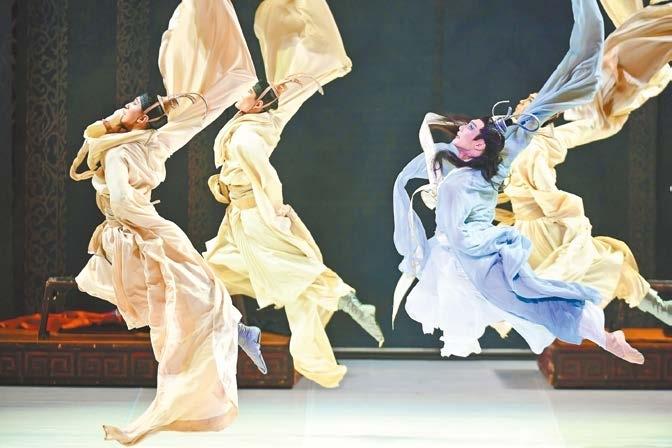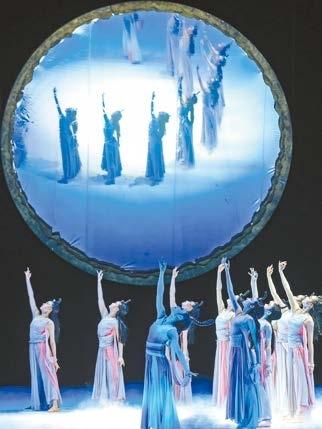

MANY of us may still remember the pleasant surprise from the dance drama “The Night Banquet in Tang Dynasty Palace.” First presented at a TV gala for the 2021 Spring Festival, it presents the process from making preparations to performing by a group of female musicians at a banquet in Tang Dynasty (618-907), breaking the stereotype of lyric atmosphere of Chinese classic dance and offering an amusing and real-life sense. Following the airing of the gala, the young dancers took social media by storm, topping the trending searches of online platforms and garnering numerous likes. Now the performers have transformed into the graceful fairies of the Luohe River and are coming to Shenzhen with the production of the dance drama “Goddess of the Luohe River.” Produced by Zhengzhou Song and Dance Theater from central China’s Henan Province, “Goddess of the Luohe River” is based on the timeless masterpieces “Ode to the Goddess of the Luohe River” and “Seven-step Poem” by Cao Zhi, along with legends from central China. It tells the poignant love story of Cao Zhi and Zhen Mi, recreating the stunning scenes of the talented poet writing the “Ode to the Goddess of the Luohe River” by the river bank, all through dance moves. Cao Zhi was a son of Cao Cao, a politician who rose to prominence during the final years of the Eastern Han Dynasty (25-220). “Goddess of the Luohe River” boasts a clear and compelling narrative. It depicts the tormented life of Cao Zhi, who faces a power struggle with his brother Cao Pi, as well as his unexpressed love for Zhen Mi, Cao Pi’s beloved. Although Cao Zhi shares a deep bond with Zhen Mi, their feelings raise suspicions in Cao Pi, adding tension to the story. The fates of the three characters shape this ethereal romantic dance drama. Set against the historical backdrop of wars and conflicts, the production seamlessly integrates historical facts with mythology, weaving together poetry, songs, etiquette, music and dance. The artistic blend takes the audience back in time to 1,800 years ago. In terms of choreography, the dance drama showcases notable innovation by boldly incorporating elements of modern dance and ballet, while remaining rooted in classical dance through solo dances, duets, trios and group performances. Since its debut in December 2010, “Goddess of the Luohe River” has toured more than 30 cities nationwide, with tickets for every performance sold out shortly after going on sale. Time: 8 p.m., March 1; 3 p.m., March 2 Venue: Bay Opera of Shenzhen, Bao’an District Metro: Line 5 to Baohua Station, Exit D(Claudia Wei) | 
